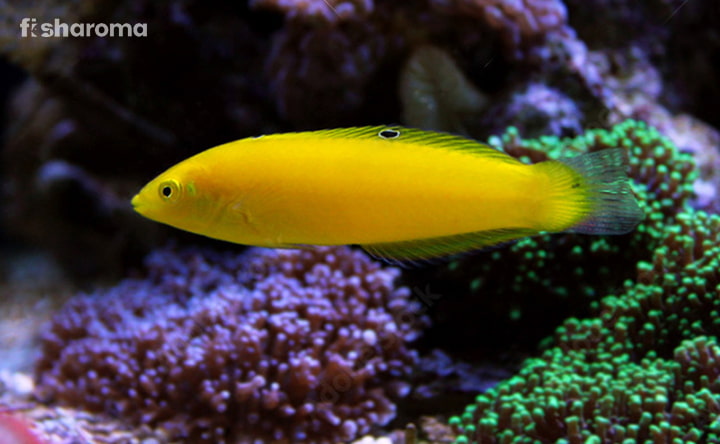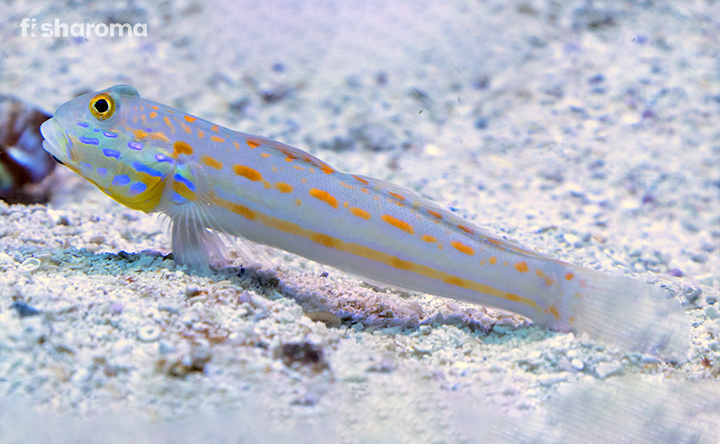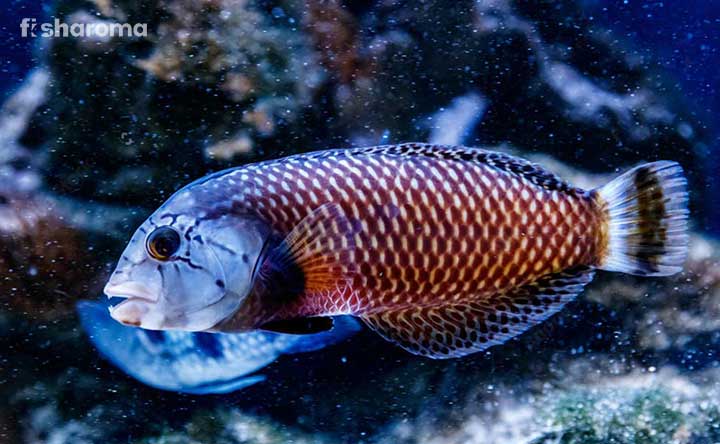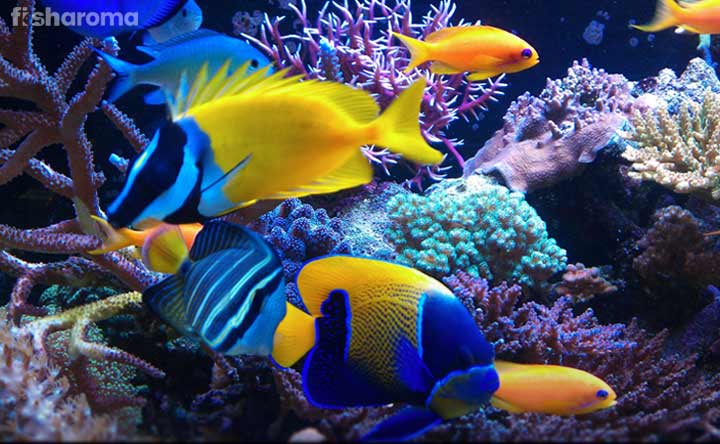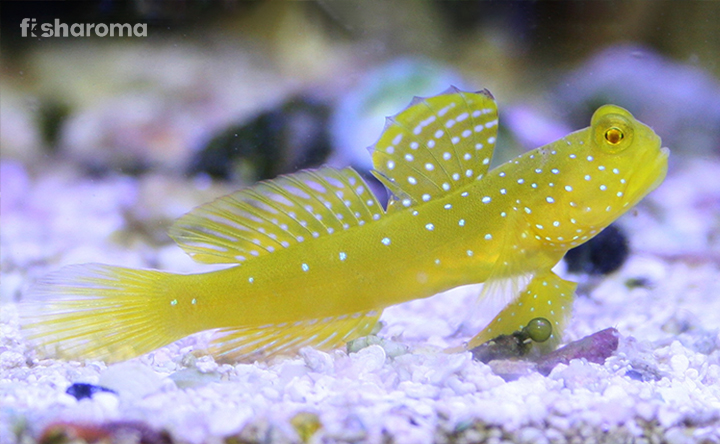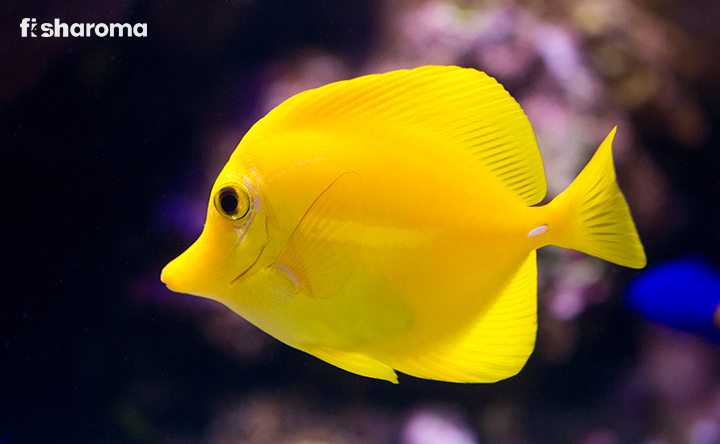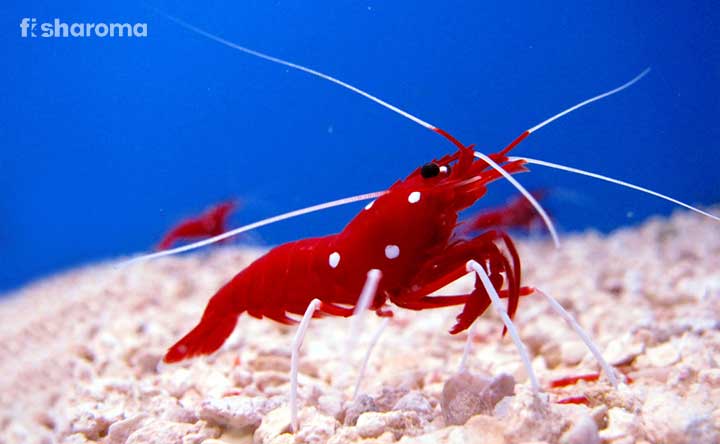Pajama Cardinalfish: The Saltwater Critter Care Guide
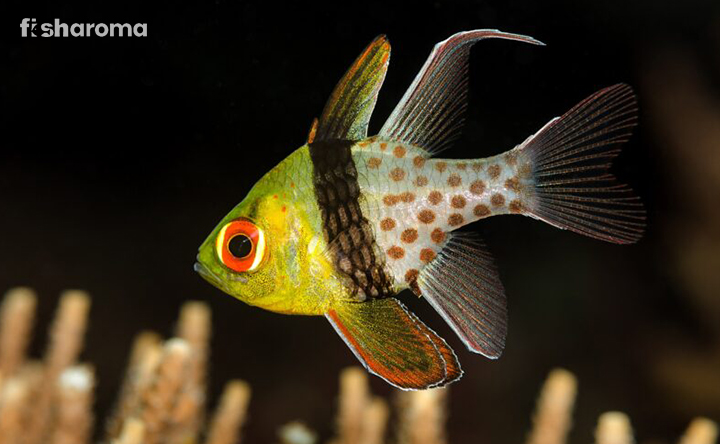
- Origin And Habitat of Pajama Cardinalfish
- Appearance Of Pajama Cardinalfish
- Behaviour Of Pajama Cardinalfish
- Lifespan Of Pajama Cardinalfish
- Diet Of Pajama Cardinalfish
- Tank Requirements Of Pajama Cardinalfish
- Water Type For Pajama Cardinalfish
- Compatibility Of Pajama Cardinalfish
- Breeding Of Pajama Cardinalfish
- Diseases Of Pajama Cardinalfish
- Summary
Pajama Cardinalfish is a small saltwater fish, with lots of colourations exhibited nicely on its body. These fishes are mouth-brooders by nature and that is one of the most distinguishing features between male and female versions. We will discuss a lot more topics, all related to these spectacular species in this article, in a more comprehensive way.
Since these fishes look exotic, aquarium owners might think handling them might be difficult, but that is entirely a wrong notion. These fishes are easy to deal with, and the ease is so much that first-time aquarium owners can choose them for the tank.
Aren’t you a little excited about the fish? Let’s start the amazon knowledgeable journey ahead!
Key Information Of Pajama Cardinalfish
Here, we are proceeding with the complete care guide, preceded by a chart, with some prime elements of information.
| Common Names | Coral Cardinalfish, Spotted Cardinalfish, Polkadot Cardinalfish, and Cardinal Pajamafish |
| Origin | Indian and the Pacific Ocean |
| Lifespan | 2-5 years |
| Colours | Grey, green, white, black, red, |
| Temperament | Docile |
| Size | 3-3.5 inches |
| Diet | Carnivorous |
| Reproduction | Mouth Brooder |
| Maintenance Requirements | Low |
| Tank Size | 20-30 gallons |
Overview
Cardinal Pajamafish is a schooling saltwater species that swims in a small to medium-sized group. The marine fish has a binomial name Sphaeramia nematoptera and it is a member of the Apogonidae family and Sphaeramia genus. This is ideal for being inside a community fish tank, owing to its calm nature. Handling and maintaining the fish is actually easy. It has a colourful body that flourishes and becomes more prominent if it receives the right water condition. The carnivore fish feeds on many smaller creatures in the wild, and you need to allow it to have the same diet in captivity, so that it can thrive and reach its potential, in terms of its lifespan. The Pajama Cardinalfish has a praiseworthy hardy nature, that makes them an excellent tank addition for fish enthusiasts.
Origin And Habitat Of Pajama Cardinalfish
The fish is native to parts of the Western Pacific Ocean, the Indian Ocean and the Coral Sea. You can find the fishes in Fiji, Ryukyu Islands, Java, and around the southern parts of the Great Barrier Reef, Indonesia, Papua New Guinea, Philippines, Sri Lanka, and Northern Australia.
Their natural habitat consists of a lot of coral reefs, and lagoons with shades and fast currents.
Appearance Of Pajama Cardinalfish
The small fish has tremendous combinations of spectacular shades and you can observe multiple patterns at the same time.
Size
The average size of the fish is 3-3.5 inches although some can claim to have seen fish as small as 1 inch as well. Although, the scientific data doesn’t back this up as their standard size and that particular species might as well be an exception. The male fishes are slightly larger than the female fishes.
Colour
The grey coloured body has a black wide patch just at the beginning of its dorsal fin and it is extended till the pectoral fin. The mouth of the fish is a mixture of yellow and green, with both shades visible. The posterior part of the body has a solid grey shade with red or orange polka dots. These dots are initially black, especially in juvenile fishes and they go through a transformation in their formative years, before being ended up as red or orangish-red. Their eye is comparatively big and it has a bright red shade.
The second dorsal fin has an extended tip that is not the same in female fishes, and this feature is a telltale sign that separates a female and a male Pajama Cardinalfish.
Behaviour Of Pajama Cardinalfish
The Pajama Cardinalfish is a nocturnal species, and probably that is the reason it has a couple of big eyes that can help them see in the middle of the night. Despite this, these fishes are seen to be active in the daytime as well, although most of their activities take place at night.
The black patch on their body is conducive for them to camouflage amidst the coral and reef structures. The fishes are tiny but their active nature will keep you entertained and hooked to the species.
They are a schooling species, and they prefer to stay in a small group. Their swimming style can be termed as floating and that is quite amusing to watch as an owner of the tank.
They are territorial and that doesn’t make them aggressive, because they stay with their group, and return to their own selected spaces inside the tank. Also, you can observe that these fishes maintain a certain order in their group, implying the social hierarchical status. Although they are social, they hide and at times they prefer to do so. This is not because they are shy, it is their way of life.
Lifespan Of Pajama Cardinalfish
The fish lives fairly for around 5 years, that too with optimum care and conditions. Their thriving conditions are nothing out of the world, and it is pretty basic. So, if you want your fish to be healthy, provide all the parameters unconditionally.
Diet Of Pajama Cardinalfish
The little fishes are hardcore carnivores and they accept everything fleshy. Since they are more active at night, you should feed them one of their meals at night. This way they can optimize their dietary nourishment. They can feed at day as well, but their energy level is at its peak when they are in dark. It is best to separate their entire meals into small portions and give them multiple times round the clock.
In the wild, they are little predators who live off the smaller insects and crustaceans. So, while you are planning their diet, include all of the available. Also, remember that in their natural habitat, they need to procure their own live food, so their predatory instinct might show up at the tank. Although that is only visible if you offer live food.
Live foods can increase the risk of parasitic and bacterial infection all the time, unless they are harvested by the breeders. Apart from live foods, you can offer flake and pellets but a few fishes might be picky eaters and they can clearly make you understand if they are not ready to accept those commercial foods all by themselves.
You can give them Brine Shrimps, available feeder fishes, Bloodworms, Mysis Shrimps, and such options. Give them these foods either in dried form or in frozen-thawed ways, apart from live forms. These need to be finely chopped before you offer them so that they can chew without any problem.
Tank Requirements Of Pajama Cardinalfish
The Pajama Cardinalfish, despite being a small fish, require a moderately sized tank. This is because they don’t face any space-related issues. They are community fishes, so you need to make sure that all the fishes can stay without any problems. Also, their requirement, as we have mentioned, is not high, but you need to keep the basics in a proper way. These fishes are reef safe and you can set a marine tank with such a backdrop.
Tank Size
They can stay inside a 20 gallon tank, but for their optimum convenience, keep them inside a 30 gallon tank. This way, they can successfully locate their favourite spot, without giving each other any problems.
Tank Lid
The importance of tank lid is unmissable because it restricts foreign detrimental things from entering the tank, and subsequently polluting the water and the quality of fish life.
Substrate
The fish doesn’t need any specific substrate type, but you can give it a marine tank, which is an absolute necessity for the survival of the fish. You can try sand-based substrate, with some decorations for the same. The best thing is, to go for the preferences of other tank mates in terms of the tank bottom. The Pajama Cardinalfish would be okay with anything and never complain. This is because these fishes mostly roam around the middle layer of the tank or water. They are not fond of upper or bottom-dwelling at all, apart from some rare occurrences (that too doesn’t have any specific pattern).
In some home tanks, there is absolutely no designated substrate option, and the bottom is empty, and the fish doesn’t care. We recommend not to keep it empty because the more colourful the tank, the better for the mental health of the fish. It is better to keep it sand-based and opt for other things that can make the fish feel at home.
Filter
A filter doesn’t only filter the water but also plays a great role in creating the water current or flow. These fishes swim in fast and strong currents, so you need to arrange for a strong filter that can also maintain the fast flow all the time.
Ornamentations
You can keep some live corals and similar decorative things inside the tank, so that the marine fish can utilize them to their heart’s content. These fishes are fond of hiding places, so make sure you incorporate such things in plenty of numbers. Also, don’t overdo the decoration, because the shoaling fishes need to spacious zone to swim. You can place some rockwood also to make such hiding places more interesting.
Lighting
Strong lights are a big no-no because the fishes can’t endure them. You have to make do with smooth or subdued lights. Many new aquarists would find it hard because these are ornamental fishes, if the owner can’t see them then what is the purpose. That being said, we can recommend that, place the aquarium in such a way that even lowlights can enhance its beauty. The fish needs to be comfortable and visible to you at the same time.
Many breeders or aquarists have made their pet nocturnal fish more active during the day by long dietary training. However, we believe that you should let the fish maintain its natural tendencies so that it can amuse you with its authenticity.
Presence of Flora
Aquatic plants ensure the oxygen quotient of the tank, besides working as the decorative purpose. As far as these fishes are concerned, they can use plants or rather seagrass to hide, whenever they feel like a quick getaway. They are slow swimmers, and they like to use the plants, so select them wisely.
Cleaning Method
The filter would do the basic cleaning, but still, you need to manually clean other stuff. If there is any food leftover or other debris then make sure to remove them. Also, you can clean the artificial hiding things that you may have put inside the tank. The aquarium glass needs to be wiped by a cleaning towel so that the visibility is clear from both sides.
Water Type Of Pajama Cardinalfish
Pajama Cardinalfish are marine creatures and need certain parameters. Maintaining them is the least that you can do. Here we will elaborately discuss the values and other units of the water quality that would make the fish thrive.
Temperature
The tank for Pajama Cardinalfish should have warm water with a temperature range of 22-27 Degrees Celsius. The fishes are hardy, but it is not good to leave them up for tremendous water temperature fluctuation. Try to maintain these optimum ranges so that the fish can lead a healthy life.
pH Level
The pH level of the water should be 8.1-8.5, meaning the water would be slightly alkaline in nature.
Hardness
The carbonate hardness of the water should be 8-12 dKH.
The Ammonia, Nitrate, and Nitrite, all should be 0 ppm without a doubt. As far as the gravity is concerned it should be close to 1.026.
Replacement Procedure
You need to change the water of the tank, partially biweekly. This is important to keep the water quality static at an optimum level. Don’t take more than 10-15 % of water for a change, because more water change can shock the fish and as a result, the beautiful creature can get scared or stressed.
Compatibility Of Pajama Cardinalfish
The Pajama Cardinalfish is a mellow fish that has a good temperament, most of the time. These fishes have no qualms in sharing their tank with other fishes. The only condition is that all the fishes should come from a different background so that you don’t have any problem maintaining the tank set-up.
You can also keep only these fishes, all by themselves or you can also keep a couple of fishes together. Although their numbers are their strength, they are more confident when they stay in a big group of 6-7 fishes together.
Suitable Tank Mates
The ideal tank mates for a Pajama Cardinalfish are those who don’t clash temperament and water parameter wise. The fishes who are equally jovial and peaceful should be kept with a Cardinal Pajamafish. Also, since your Cardinal fishes would be occupying the middle zone, make sure you select those mates who swim in the bottom or the upper zone of the water.
Some of the suitable options are given below
- Dartfish
- Clownfish
- Dwarf Angels
- Filefish
- Gobies
- Dragonets
- Seahorse
- Pipefish
- Wrasse
- Different Parrotfish
- Damsels
This is to be remembered that most of the fishes share the same requirements and behaviour, so they won’t mind staying together. However, one should always prepare for witnessing two fishes not going well with each other. If you are not sure how to tackle this, better be opt for less variety of fishes.
Unsuitable Tank Mates
As a thumb rule, you can’t keep any aggressive fishes who can prey on the colourful Cardinal Pajamafish. Since these are colourful they can be easily located inside the tank and can be chased down to death by bigger boisterous fishes.
Breeding Of Pajama Cardinalfish
These fishes naturally mate as a course of nature and they show no tantrums in the home tank as well. Many of these fishes often even don’t need a separate tank, but it is better to create one because in the main tank there will be many other fishes that are detrimental for juvenile or newborn fishes.
The protein-enriched diet is essential for potential mates and these nocturnal fishes will spawn at night. Afterwards, the male will show its mouth-brooding ability, followed by carrying all the eggs inside its mouth for a long 3-4 weeks. The male fish will not have any food for this phase and the female fish will guard its mouth brooding partner for the time. During this time, the male fish will have a swollen and extended jaw, so that it can fit multiple eggs. You can also see that the female fish, with its parental instinct, becomes extra protective.
The male fish, however, doesn’t get the brooding act right all the time. Sometimes, it can spit out the eggs, this is mostly because the male fish is doing it for the first time or the fish is really starved and weak. It is with time the same fish can excel in mouthbrooding. Since males and females can spawn regularly, this act becomes smooth for male fishes over time.
However, once the hatching is approaching, the male fish will release the young fishes or “fry” out in the water. You can separate the male and female during this time. The young fishes can feed on Brine Shrimps and other fry friendly foods.
Diseases Of Pajama Cardinalfish
These fishes are actually strong and they are not the ones to frequently fall ill, but there are exceptions. You must know that common saltwater diseases like Ich, Hole in the Head, Lymphocystis and many such parasitic and bacterial diseases can be there. Take care of the fish, with its dietary needs and water condition so that there is no such occasion where it can be a victim of such illness.
Even after maintaining a decent lifestyle, these fishes are becoming sick, take it to a vet and get it treated professionally.
Summary
The Pajama Cardinalfish is a colourful species that graces the saltwater region. Their size is small, but that is hardly a thing when their temperament is timid. Their shoaling behaviour makes it easy on the eyes for aquarists. There is nothing challenging when it comes to keeping them because they jovially exist with other marine fishes. Their breeding phase is mentionable because not every day you can see a mouth brooder fish. These fishes have a good lifespan of around 5 years, so that means a pretty good partnership with your pet. Isn’t it?
Similar Care Guides
If the above article has been good and informative enough to convince you to get one Pajama Cardinalfish for yourself, read our other articles
- Dwarf Lionfish – The saltwater fish with a great lifespan of around 10 years can anytime spruce up any tank, with its forked fins. This is a collective name for 4 types of fishes, known mostly as Zebra Turkeyfish, Hawaiian Lionfish, Dwarf Fuzzy Lionfish, and Fu Man Chu Lionfish.
- Panther Grouper – The spotted fish is a saltwater fish, with around 25 inches of size. This is a carnivorous fish that can easily cohabit with Eels and Pufferfish and so on.
- Ember Tetra – This is a small freshwater fish, happily thriving in around 10 gallon tank. Belonging to the Tetra group, this fish loves to stay in their own groups, and inside a community tank with other fish species.

